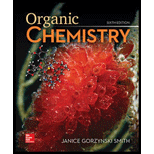
(a)
Interpretation: The skeletal structure of the anabolic steroid methenolone from the given description is to be drawn.
Concept introduction: Steroids are composed of tetracyclic lipids. They have structure containing three six membered ring and one five membered ring. Some of the steroids are biologically active.
(b)
Interpretation: The skeletal structure of the anabolic steroid methenolone from the given description about the configurations at the stereogenic centers is to be drawn.
Concept introduction: Steroids are composed of tetracyclic lipids. They have structure containing three six membered ring and one five membered ring. Some of the steroids are biologically active.
The stereogenic centers with
(c)
Interpretation: The structure of Primobolan, the product formed on the treatment of methenolone with
Concept introduction: In the presence of base, the hydroxyl group loses its proton to form alkoxide. The alkoxide attacks on the carbonyl carbon of acyl chloride or acylic anhydride to leading to the formation of acyl group and removal of chloride. This process is known as acylation.
Want to see the full answer?
Check out a sample textbook solution
Chapter 29 Solutions
ORGANIC CHEMISTRY (LOOSELEAF)
- The reaction Q(g) + R(g) → Z(l) is shown to be exothermic. Which of the following is true concerning the reaction. it is spontaneous only at High T, it is spontaneous at low T it is nonspontaneous at all T it is spontanrous at all T. it is non spontaneous only at low T.arrow_forwardThe reaction Q(g) + R(g) → Z(l) is shown to be exothermic. Which of the following is true concerning the reactionarrow_forwardWhich of the following has the largest standard molar entropy, S° (298.15 K) He H2 NaCl KBr Hgarrow_forward
- Which of the following is true for a particular reaction if ∆G° is -40.0 kJ/mol at 290 K and –20.0 kJ/mol at 390 K?arrow_forwardWhat is the major product of the following reaction? O O OH OH 1. BH 2. H₂O₂, NaOH OH OHarrow_forwardDraw the products formed when each ester is hydrolyzed with water and sulfuric acid.arrow_forward
 Organic ChemistryChemistryISBN:9781305580350Author:William H. Brown, Brent L. Iverson, Eric Anslyn, Christopher S. FootePublisher:Cengage Learning
Organic ChemistryChemistryISBN:9781305580350Author:William H. Brown, Brent L. Iverson, Eric Anslyn, Christopher S. FootePublisher:Cengage Learning
 Introduction to General, Organic and BiochemistryChemistryISBN:9781285869759Author:Frederick A. Bettelheim, William H. Brown, Mary K. Campbell, Shawn O. Farrell, Omar TorresPublisher:Cengage Learning
Introduction to General, Organic and BiochemistryChemistryISBN:9781285869759Author:Frederick A. Bettelheim, William H. Brown, Mary K. Campbell, Shawn O. Farrell, Omar TorresPublisher:Cengage Learning Chemistry for Today: General, Organic, and Bioche...ChemistryISBN:9781305960060Author:Spencer L. Seager, Michael R. Slabaugh, Maren S. HansenPublisher:Cengage Learning
Chemistry for Today: General, Organic, and Bioche...ChemistryISBN:9781305960060Author:Spencer L. Seager, Michael R. Slabaugh, Maren S. HansenPublisher:Cengage Learning



